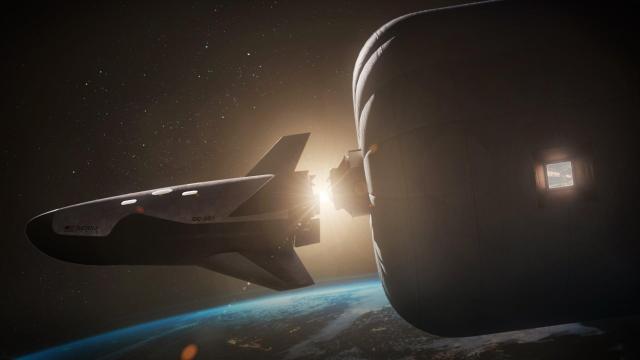A new Blue Origin crewed spacecraft is in the works as part of a NASA collaboration designed to advance the orbital economy, with the space agency lending its expertise to seven different commercial partners.
NASA selected seven U.S. companies as part of its Collaborations for Commercial Space Capabilities-2 initiative (CCSC-2), whereby the space agency will oversee the development of their proposed ideas for low Earth orbit. The companies included in the second round of the commercial collaboration are Blue Origin, SpaceX, Sierra Space, ThinkOrbital, Vast Space, Space Exploration Technologies, and Northrop Grumman. None of these companies will get any money from NASA under these unfunded Space Act Agreements, but they can tap into the space agency’s expertise.
As part of the new initiative, Blue Origin will develop an affordable commercial space transportation capability to carry crew to low Earth orbit at high frequencies. The company, founded by Amazon billionaire Jeff Bezos, was previously awarded a funded agreement by NASA to develop a spacecraft for the agency’s commercial crew program. In 2012, Blue Origin began testing the design of its next generation Space Vehicle, but the sleek-looking spacecraft never saw the light of day.
It’s not clear whether the company will resurrect its Space Vehicle for NASA’s latest collaboration or design a new spacecraft from scratch. Blue Origin did not immediately respond to Gizmodo’s request for comment.
Elon Musk’s SpaceX is another company involved in NASA’s new commercial initiative to develop an “integrated low Earth orbit architecture” that will use the Starship rocket for transportation and the crewed Dragon capsule for an“in-space low-Earth orbit destination element,” NASA’s statement read.
SpaceX is under a $US2.89 billion contract to use a lunar lander version of its Starship rocket in landing humans on the Moon by late 2025 as part of NASA’s Artemis 3 mission, and then again for Artemis 4 in 2028, under a separate $US1.15 billion contract signed last year. Blue Origin was recently awarded a $US3.4 billion contract to build a second human landing system for Artemis 5 and subsequent missions after that. Bezos was bitter about SpaceX landing that first contract, unsuccessfully suing NASA for its decision.
Other companies joining NASA’s latest list of commercial partners include Colorado-based Sierra Space, which will collaborate with the space agency in the development of a “commercial low Earth orbit ecosystem” that includes “space transportation, in-space infrastructure, and expandable and tailorable space facilities,” to promote a human presence in low Earth orbit, according to NASA.
ThinkOrbital is receiving NASA’s expertise to better develop its orbital platforms (known as ThinkPlatforms); Vast is collaborating with NASA on its microgravity and artificial gravity stations; and Special Aerospace Services is developing an in-space servicing technology called the Autonomous Manoeuvring Unit. Northrop Grumman plans to work on its autonomous spacecraft called Persistent Platform.
“It is great to see companies invest their own capital toward innovative commercial space capabilities, and we’ve seen how these types of partnerships benefit both the private sector and NASA,” Phil McAlister, director of commercial spaceflight at NASA Headquarters, said in the statement.
One company that is missing from the list is Boeing, which is yet to deliver on its Starliner Program aimed to transport NASA astronauts to the International Space Station. SpaceX, on the other hand, recently launched its sixth crew to the orbiting space station.
NASA has become increasingly reliant on its commercial partners in an effort to create a robust space industry, while also saving the space agency some time and money.
Twitter and bookmark Gizmodo’s dedicated Spaceflight page.
